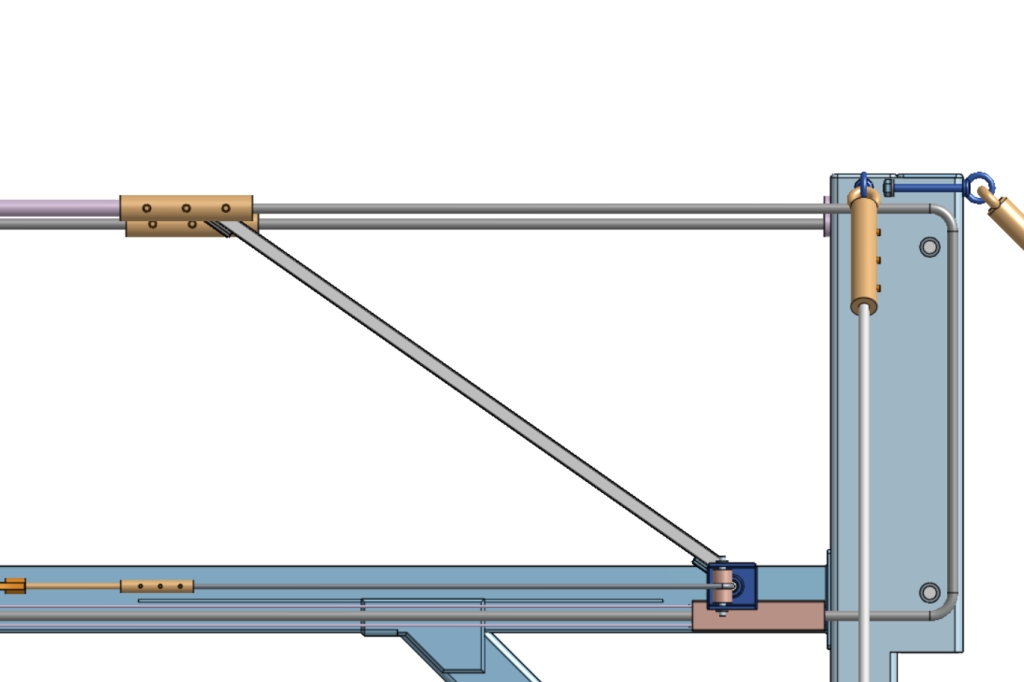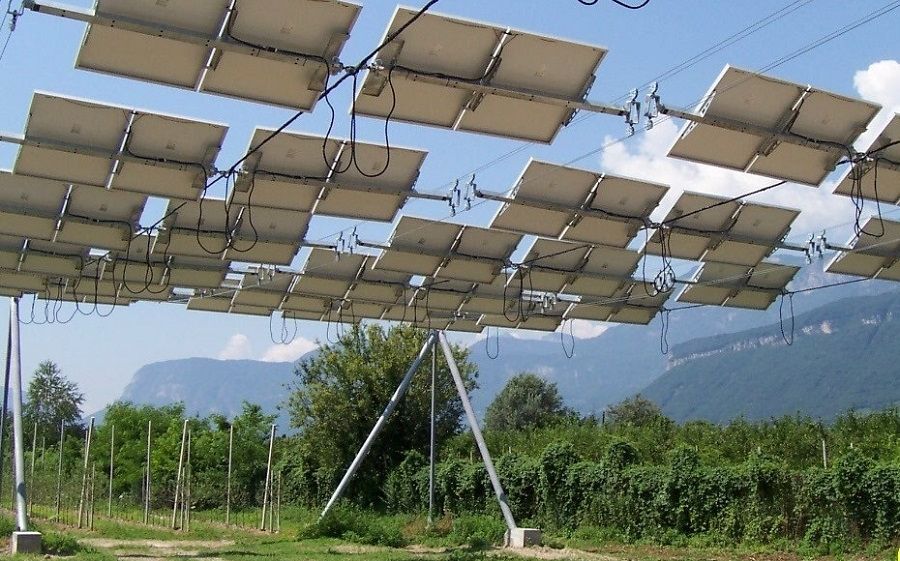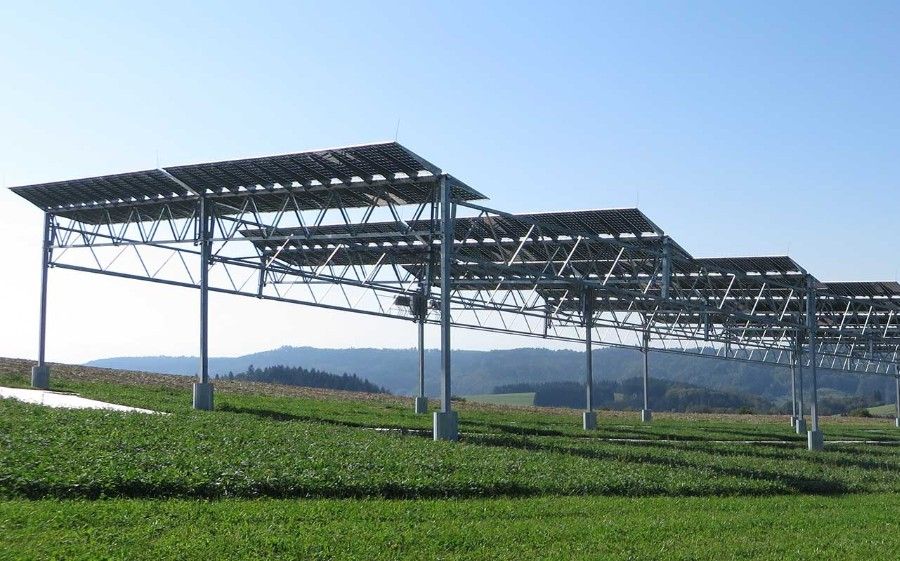CABLE-in-TUBE
Steel cable in a rectangular Jäkel-tube welded with L-shape angle profile, fixed by elements of plastic joined by two lines.
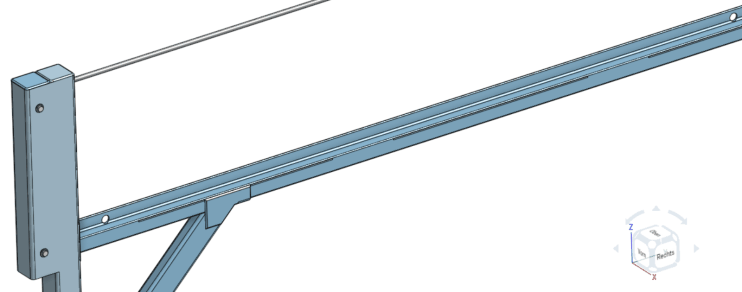
Steel cable - the main bearing element is placed in a tube to enable higher cable tension
Tube - the supporting fixation element from steel/dural/plastic or combined materials
Example: thin-walled Jäkel-tube from steel and L-shape angle profile from dural
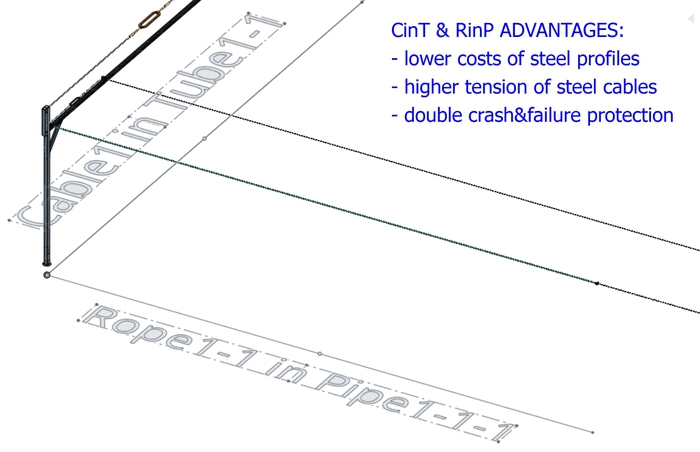
The steel construction without cables requires two parallel thick-walled tubes.
The pure cable solution without tubes yields to a crash in the case of a cable failure.
The cable failure of the APV-IN-system is compensated by the stability of the tubes alone.
Comparison with examples of the current "pure" solutions:
Lower part of the steel cable is placed in a rectangular Jäkel-tube:
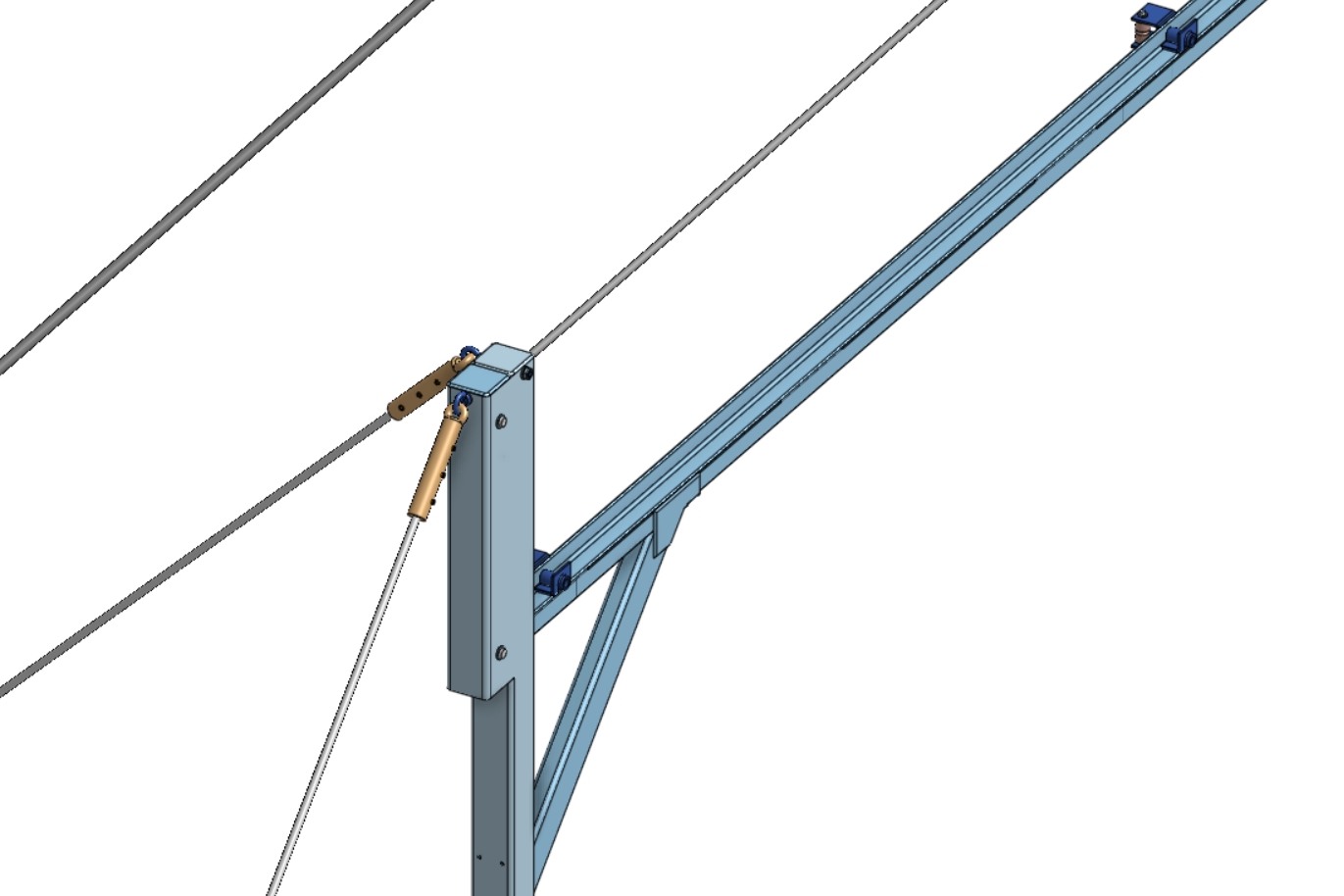
Whole steel cable without a rectangular Jäkel-tube:
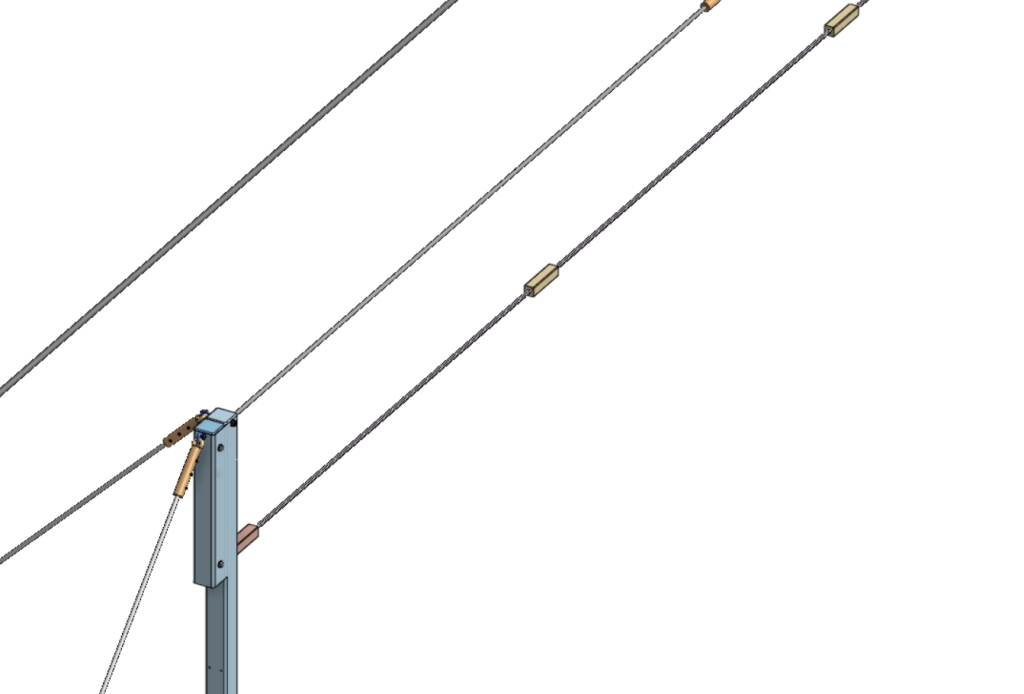
Steel cables in and without a rectangular Jäkel-tubes:
